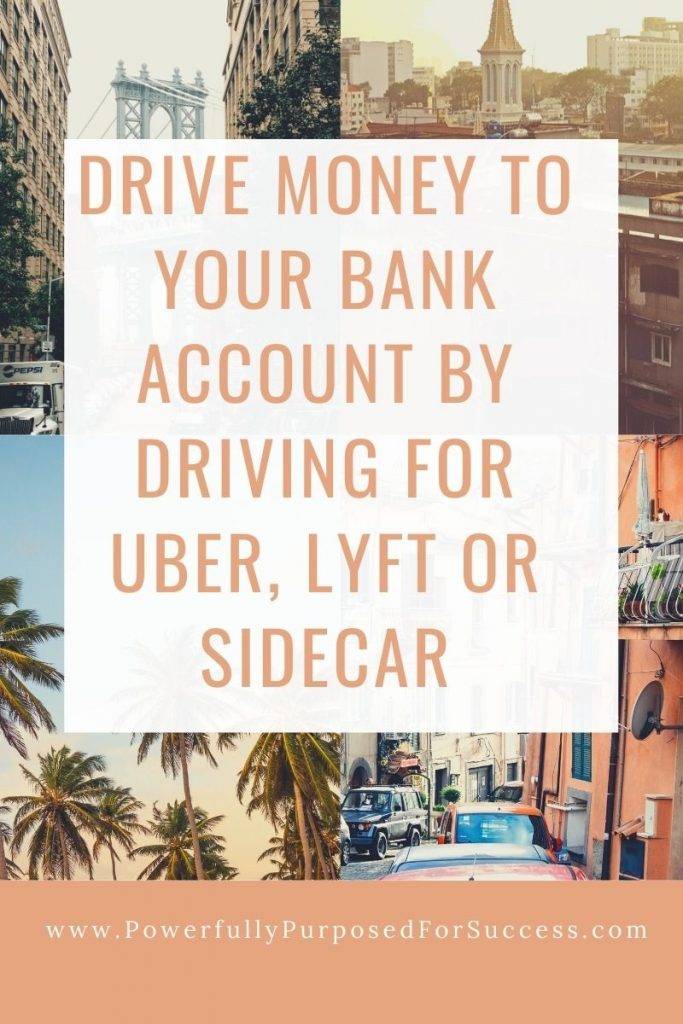Do you want to work for yourself but not on a computer all day?
Do you own a commercially insured and licensed vehicle?
Do you enjoy interacting with people?
Well, then maybe you can make money driving for Uber, Lyft or Sidecar.
What and Who Are These Companies?
It’s become nearly impossible to log on these days without seeing ads all over the Internet for Uber, Lyft, and Sidecar. All three of these popular ride sharing services are constantly—or so it seems—hiring drivers. Lyft claims to pay up to $35 an hour with Uber touting that you can easily make $1,000 a week and set your own schedule. Sidecar doesn’t seem to advertise quite as heavily as the other two, but it does seem to have gotten into the ride-sharing service game as well.
This article will attempt to break down and explain the details on how each one pays, when they pay, and their overall reputation.
Introducing Uber
Uber is probably the best known of the three and hires drivers as independent contractors with cars, no older than eight years old, to drive for them. Your car must also be commercially insured with the proper registration, but you will NOT need to hold a CDL license. Just your regular state issued driver’s license is enough along with a cell phone to be able to download the Uber app and communicate with the dispatchers.
With Uber’s mobile technology and lower fares (almost 30% less than most cabs), Uber has been in direct competition with the taxi industry even causing several taxi companies to protest Uber’s existence.
Many drivers enjoy the flexibility, being their own boss, and overall customer experiences. However, there are a few negative things that did turn up in my research.
Some drivers complain of having to cut their hours from 20 hours a week to 12 hours a week to make it work their time. Currently, Uber takes a 20% commission for drivers’ earnings. While you can set your rates, it still has to be within reason. Some drivers also say it isn’t worth their time after Uber raised its rates, it’s only worth driving during the peak, rush-hour times. Also, Uber offers both Uber Black and Uber X, which is first class and economy services, respectfully. Uber Black also offers water and snacks to the riders at the cost of the drivers as well as command a newer, better looking car.
Uber also encourages its drivers to stay above a 4.6 out of 5 star rating, and drivers are to refuse tips at least on the first offering. However, if a rider insists, then the driver can accept the tip on the second attempt.
Many drivers complain that passengers don’t know about the rating system and save their 5-star ratings for the best of the best. If a rider complains to Uber and asks for a refund Uber will refund the money out of the driver’s money.
Uber does pay weekly via PayPal or direct deposit.
Introducing Lyft
Lyft is probably next in line to Uber as far as popularity goes. Again, flexibility and being your own boss is the draw here. Now Lyft uses a commission structure where the more hours you work, the less commission you pay. So it’s the same 20% commission at the start. But for 15 hours, it goes down to 15% commission. Then if you work the fullest schedule, which is 50-plus hours on Lyft, you pay zero commission. This is great for drivers who want to keep more of their hard-earned pay.
With Lyft, you are also an independent contractor using your own commercially insured and licensed vehicle. Drivers receive up to 80% of payment with Lyft taking the other 20%. With Lyft, there are only certain cities in certain states where you can drive for them. No CDL license is needed here either.
To work for Lyft, you must be at least 21 and own an iPhone or Android phone. As part of the approval process, you’ll undergo a DMV check, plus a national and county background check. This will require a Social Security number, in addition to an in-state driver’s license that is at least a year old. If you can pass all of this, then you can work for Lyft.
Your car needs to have four external door handles and at least five total seat belts. You must be a covered party on your car’s in-state insurance, and have in-state license plates. All of this will be confirmed during your 19-point vehicle inspection. Cars have age requirements too, which can vary by state.
At Lyft, you are an independent contractor. Some riders say that they prefer Lyft, because it is cheaper and the drivers are better. Payment for the drivers is direct deposit once a week.
Introducing Sidecar
Then there is Sidecar, who has set out to build a better mousetrap. Sidecar claims that it is building the largest transportation marketplace powered by everyday people. The company offers three services: Sidecar, a ride app which connects riders with drivers; Sidecar Shared Rides, a discounted instant carpooling app; and Sidecar Deliveries, a breakthrough innovation that combines people and packages for the fastest and lowest cost same-day delivery solution. No CDL is required for any of the drivers.
At Sidecar, drivers are prescreened as well as the vehicles cannot be built past 2000. Sidecar is only available in certain major cities throughout the US. While Sidecar isn’t has well-known as Uber and Lyft, it does have a large ridership bidding for the three rider services.
As a driver, you can set your own rates as an Independent Contractor. Sidecar will transfer money into your bank account via Stripe and you are basically paid every business day that you work.
What Do All Of These Driving Companies Pay?
Like always, it really just vaires. Most seem to average around $20 an hour when everything else is taken into consideration.
What Do Drivers Say About Uber, Lyft, and Sidecar?
All of them have both positive and negative comments about them. I would recommend doing a thorough Google Search as well as going on Glassdoor for reviews. You may even want to bookmark Glassdoor to be able to do your own reseach and investigations. I believe the reviews and ratings are still high enough that if you did want to look into them then you could. So, as always, do your homework.
While you can read these reviews for yourself—and you should—the positive things that drivers are saying about all of them is the flexibility and the ability to be your own boss. Some of the negative comments people are making are how rude drivers can be, how some days you only break even with your money, and the wear and tear on your vehicle.
The money seems to still vary by area with most drivers for all three ride share companies claiming $12 to $24 an hour depending upon the time of day and what is going on in the city.
How Can Interested Individuals Apply And Start Driving For Any One of These?
Just go to the website, read the requirements, and apply. So, there you have it! Which one do you want to drive for? The decision is yours! The rides are there.
In Conclusion
Try these three or any one of them, and if it doesn’t quite seem like a match for you, consider something else. Maybe delivering goods might be more in line with what you want. There are plenty of those out there as well or other ideas on the WAH and Freelance Gig Page.



















